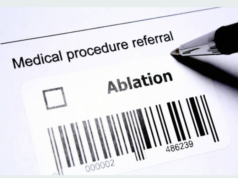The first patient has been enrolled and treated in the SHINE clinical study in Europe. The multicentre study aims to evaluate balloon ablation catheter for safety and effectiveness in achieving pulmonary vein isolation in treatment of paroxysmal atrial fibrillation.
The study will evaluate Biosense Webster’s next generation multi-electrode radiofrequency (RF) balloon catheter for its ability to isolate pulmonary veins when treating paroxysmal or intermittent atrial fibrillation (AF).
The first patient was treated last week at Barts Hospital in London, United Kingdom, by Richard Schilling, professor of Cardiology. The clinical study will enroll up to 230 patients across multiple sites in Europe.
Cardiac ablation is a minimally-invasive procedure that neutralises parts of the abnormal electrical pathways causing arrhythmia. In the procedure, doctors thread a flexible balloon catheter through blood vessels to the left atrium of the heart. Once there, the balloon is inflated near the pulmonary veins and RF energy is applied to create lines of scar tissue to prevent the pulmonary veins from emitting faulty electrical impulses that can trigger AF.
“This new device may be an important advance in cardiac ablation technology,” said Schilling. “It has unique design characteristics simplifying pulmonary vein isolation that may translate into improved clinical outcomes and procedural efficiencies,” added Shilling.
The new RF balloon catheter used in the study is designed to deliver directionally-tailored energy using multiple electrodes. The device will be used in combination with the company’s integrated multi-electrode circular diagnostic catheter to potentially improve procedural efficiency.










